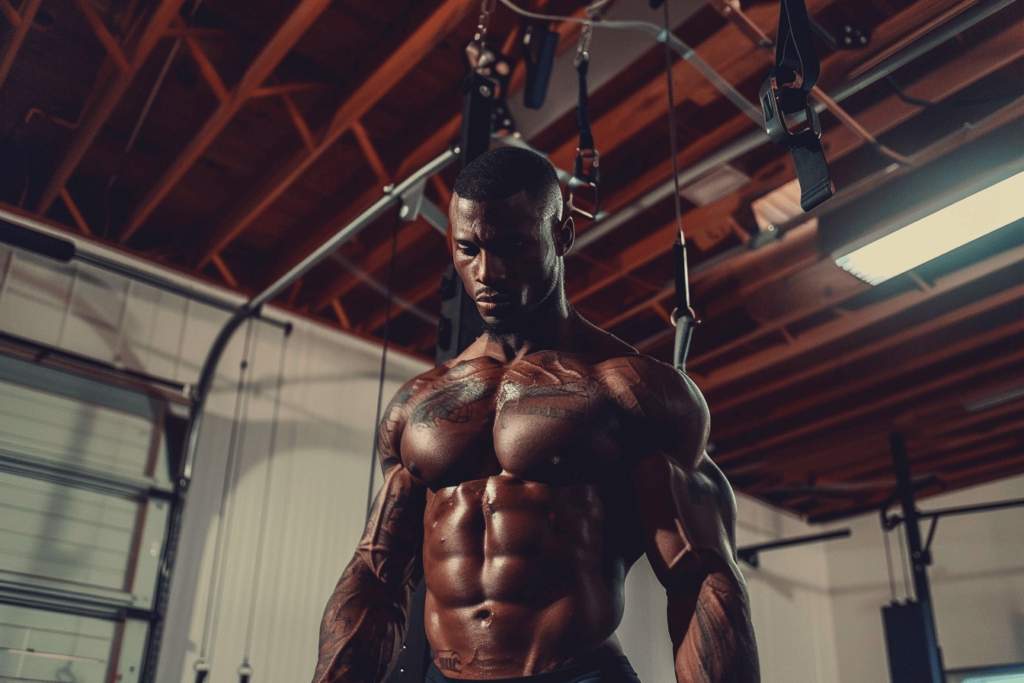Your core goes beyond just the six-pack abs.
The core is not simply a single muscle. Instead, it’s a sophisticated network of muscles.
These include the pelvic floor muscles, transversus abdominis, multifidus, internal and external obliques, rectus abdominis, erector spinae, diaphragm, latissimus dorsi, gluteus maximus, and trapezius.
These muscles stabilize, initiate, and transfer force, impacting almost every physical activity you do.

Having a strong core not only enhances your performance in exercises, but also leads to better overall strength and efficiency. For instance, without a stable core, heavy squats may not be feasible.
Core exercises target muscles in the pelvis, lower back, abdomen, and hips. By training them together, you improve balance, stability, and overall physical performance. This makes core workouts an essential component of any comprehensive training routine.
Core Muscle Group
Your core comprises a complex group of muscles, with the rectus abdominis playing a pivotal role. Commonly known as “the abs,” these muscles run vertically along your abdomen, facilitating body movement, offering support, and safeguarding internal organs.
The obliques, both external and internal, contribute to flexion and rotation. Meanwhile, the transverse abdominis, situated deep in the abdomen, acts as a foundational element for heavy lifting.

This muscle group forms the cornerstone of a robust core workout
This emphasizes the importance of exercises like bridges and planks over traditional crunches.
Doing this effectively targets and strengthens the core muscles responsible for stability and balance.
Enhanced Abdominal Wheel Extension
One of the most effective exercises for building a strong core is the ab-wheel rollout. This simple tool is affordable and offers a challenging workout.
The ab-wheel rollout targets various abdominal muscles, including the rectus abdominis, obliques, and transverse abdominis. It provides a complete workout for the abs, leading to a stronger core overall.
Additionally, this exercise helps train the spine to resist excessive extension. Starting with ab wheel rollouts may be challenging, but mastering it will enhance your core strength, improving your performance in other lifts.
Step-by-Step Guide for Ab Wheel Rollouts
To do an ab wheel rollout, stand up straight with the wheel at your feet, arms and legs extended.
Bend down, grab the wheel, and roll it out steadily until you’re fully stretched out.
Then pull back, returning to the starting position. Seems simple, right? Give it a try a couple of times, and you’ll find it quite challenging.
The key is to keep your midsection muscles engaged throughout and control your pelvis for proper form.
Tilt your pelvis slightly backwards before rolling out to engage your abs more effectively.

This exercise requires basic core strength and solid lower back muscles. If it feels tough initially, work on strengthening your core and lower back with lighter exercises first.
A good warm-up for this workout is a 5-minute plank session. Start with partial rollouts and gradually increase the distance as you build strength. If you’re experienced, aim for 5 sets of 20 reps each.
Maintain total body stability while rolling in and out, keeping your knees and arms tight, and focusing on your abs.
The farther you extend the wheel, the more tension you create in your midsection.
VIDEO: THE ULTIMATE AB ROLLOUT PROGRESSION
Correct form is crucial for optimal results, so progress gradually to achieve perfection.







